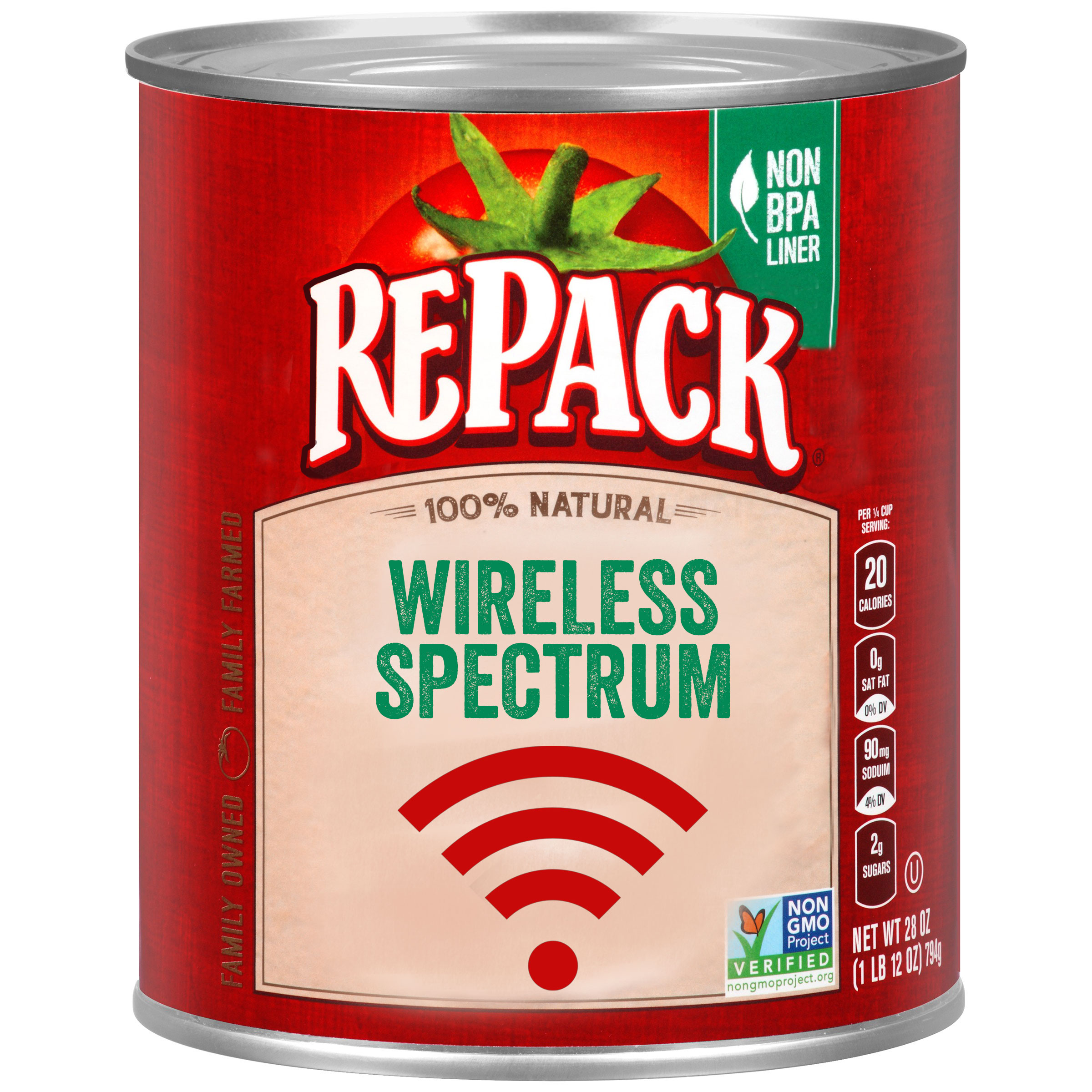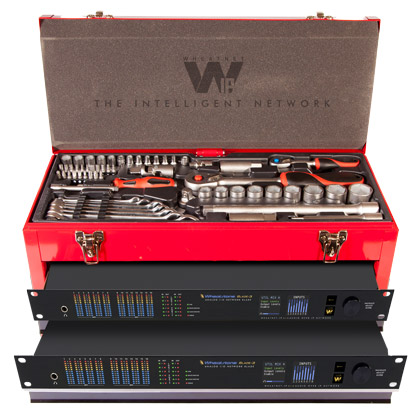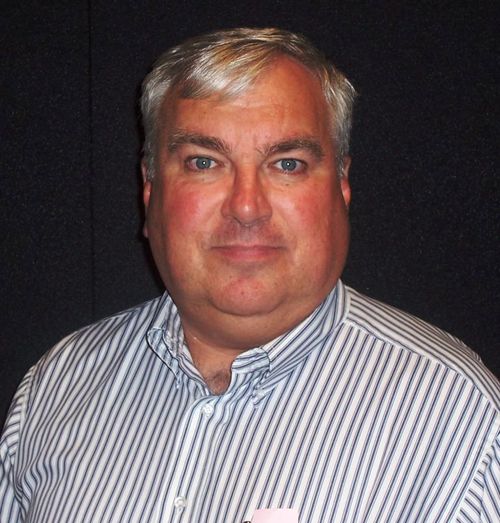WHEAT:NEWS TV
JUNE 2017
Volume 4, Number 6
Got feedback or questions? Click my name below to send us an e-mail. You can also use the links at the top or bottom of the page to follow us on popular social networking sites and the tabs will take you to our most often visited pages.
“You Are Here.” But Not For Long.
We’re headed for some big changes. ATSC 3.0. Spectrum repack. Next Gen TV. It’s coming at us from all directions, this big cloverleaf of change. Where do you start? We asked Kent Hatfield, Vice President of Technology and Operations for WXXI-TV/FM, a public broadcaster with a TV station and several FMs in Rochester, New York.
WS: You’ve been involved in spectrum repack with WXXI. What can you tell us now that the incentive auction has happened and TV is for sure being repacked into smaller spectrum space?
KH: As you know, there are 10 phases of migration. Each phase involves stations in a market and / or regions, and those stations are interlocked, in a manner of speaking, to minimize interference between ‘old’ channel stations and newly repacked stations. Here in Rochester, all local television stations are in phase 4. All stations that are being repacked will be building out their new facilities but not allowed to ‘turn off’ their old channel and place the new channel on the air until all others in that phase are ready to do the same. Certain dates in each phase are set aside for testing and final switch to the new repack channel, again to minimize interference.
The good news is that vendors have been talking about implementation technology to allow the migration and the channel changing to be done more smoothly. For example, very wideband transmitting antennas would serve to accommodate multiple stations’ existing coverage patterns.
At WXXI, we’re very interested in these developments because we will need to be on our new channel by June of 2019.
WS: That’s not too far off. Fortunately, you own and manage your tower so that should make things go smoother. What are some other things engineers are thinking about right now?
KH: Some stations’ transmitting antennas are stacked on towers and they simply can’t be reloaded. No station wants to be off the air any length of time, so in many cases auxiliary antennas are needed with secondary or temporary transmitters. Some facilities don’t even have the space for a second transmitter. They might have to rent space for their transmitters because they don’t own their site, or build out more space to an existing facility. I think it’s safe to say that most repacked stations will require new transmitters, antennas and perhaps a feed line to the new antenna.
 WS: Auction money has been released, so you can start applying for that now to deal with some of the costs?
WS: Auction money has been released, so you can start applying for that now to deal with some of the costs?
KH: A specific document, Incentive Auction Broadcaster Reimbursement (Form 399) is due on July 12th of this year. Vendors are very busy providing technical, pricing and delivery information to stations that require equipment and services. We know that it’s going to be very involved getting this reimbursement form completed, so they’re trying to streamline as much as they can now and get the pricing early on.
WS: You’ve also raised the alarm that tower companies might be understaffed and overloaded as a result.
KH: I understand that some of the construction crews are bringing in more winch equipment, more training, and more crew, as well as certifying all their staff. The National Association of Tower Erectors has been instrumental in training and certifying rigging crews well in advance of the FCC’s replacement schedule. Still, it’s going to take some senior people in there knowing what’s going on at the tower sites. Again, I think most tower rigging and construction companies have been beefing up crews for the last six to eight months, and they’re working very diligently on training and safety.
WS: Are you looking at transmission with an eye toward ATSC 3.0?
KH: Like a lot of people, our current ATSC 1.0 transmitter is out of support and there’s no ability to retune the transmitter to a new frequency. We’ll be getting a new solid state, water-cooled transmitter that is both ATSC 1.0 and ATSC 3.0 capable.
WS: There is still some confusion about power requirements for ATSC 3.0. Explain that.
KH: The RMS (average, for this discussion) power value is about the same from the ATSC 1.0 to ATSC 3.0. The difference is that ATSC 1.0 (8VSB) requires about 3-4 dB peak power over average power while the ATSC 3.0 modulation is OFDM and can have peaks around 6-7 dB above average power. So that means the ATSC 3.0 compatible transmitter will require more peak power than ATSC 1.0 did. This doesn’t mean that the transmitter has to be more powerful. It just means that it has to be able to handle those higher peaks more efficiently without distortion.
WS: All of this is a major push toward IP for broadcasters. What does it all mean?
KH: There’s a lot that can be done with ATSC 3.0 because it’s all Internet Protocol based. Just look at what Nexstar and Sinclair are talking about with spectrum aggregation for content and data delivery. We’re just now exploring the possibilities of ATSC 3.0. There might be broadband delivery to homes or overnight delivery of content and files to businesses utilizing the ATSC 3.0 signal. Anybody that needs huge files delivered overnight, it can be done this way. We did this data delivery project called Emergency Training and Information Network (ETIN) to deliver non-realtime training materials for first responders here in the Rochester area. It was all IP packaged files that we delivered through ATSC 1.0 but it wasn’t very efficient. Now, ATSC 3.0 is going to be much more efficient and will be much faster getting those files out.
WS: What does this mean for the studio, which as you know personally is going through a sort of IP renaissance of its own.
KH: Production doesn’t have to be done on IP, although certainly the decoding and utilization will all be done on IP. But in our studios, we’ve moved most of our audio to audio-over-IP delivery over a period of time because it saves cost and is so much more flexible. We have a rather large Wheatstone system (BRIDGE router and multiple mixing consoles) in our audio footprint, and we’ve added to it fairly easily by extending MADI into the WheatNet-IP.
WS: Do you think IP throughout is inevitable?
KH: Right this minute, it may be bleeding edge. However, I believe that we will end up building IP in the studio using islands or a hybrid approach like many facilities did with HD television sources. First, it was the studio camera that went color, for example. As we replace equipment, we’ll make sure it’s IP compatible. AES67 went a long way for pushing that through for audio. SMPTE 2022 is doing the same for video.
WS: Whew. There’s a lot going on. Any final advice for other broadcast engineers?
KH: If you are not already active as broadcast engineers in the Society of Broadcast Engineers, what are you waiting for? It’s going to happen; get all the training you can and hang on!
Uptime all the Time
There used to be a perception that IP wasn’t reliable. In the early years, that may have been the case, but IP audio has proven to be quite reliable, especially since there are redundancies built into systems like WheatNet-IP.
In fact, one I/O BLADE in particular that’s been operating at a station for years now has logged 1,053 (as of May 23) days continuous uptime – not including the 1,400-plus days already elapsed before the BLADE was rebooted for a UPS battery change.
All total, this BLADE, which happens to be serial number 001 running at Cox Media Group in Tampa, Florida, has logged 2,453 days of continuous uptime with the exception of one re-boot due to routine maintenance.
Your IP Question Answered

Q: How will offloading audio services from the console to the IP network make it possible to repurpose a studio that might serve several shows, newscasts or functions?
A: One of the main advantages of an IP audio console system such as WheatNet-IP is that mixing, processing and other audio services are virtualized and therefore available for use anywhere on the network. This makes it possible to deploy audio operations for a number of formats, shows and functions from one studio rather than having a dedicated studio for each show or newscast. Instead of having those audio services fixed in hardware, they are available on the network so you can access them when you need them. You can preset routine functions for particular shows and manage feeds from show to show from the same IP console. With all the audio services and control functions needed for live TV production built into the network, you can create and store salvos and change the entire routing matrix with the push of a button. This offers a huge advantage in reducing integration costs and in simplifying ongoing operations.

Wheatstone
-
KSJS-FM (San Jose, CA) purchased a WDM audio driver for an existing WheatNet-IP audio network.
-
Rogers Broadcasting (Winnipeg, MB) purchased an L-8 control surface for an existing WheatNet-IP audio network.
-
GED Broadcast Equipment (Beirut, Lebanon) purchased an IP-12 digital audio console and AirAura X3 audio processor for a project in Oman.
-
Skyview Networks (Scottsdale, AZ) purchased a WDM audio driver for an existing WheatNet-IP audio network.
-
Powell Broadcasting (Panama City Beach, FL) purchased an IP-12 digital audio console.
-
Saga (Mitchell, ND) purchased an E-1 control surface, two IP-12 digital audio consoles and WheatNet-IP I/O BLADEs.
-
Cox (Tampa, FL) purchased two IP-12 digital audio consoles.
-
KSSN-FM (Little Rock, AR) purchased an IP-12 digital audio console.
-
California State University (Long Beach, CA) purchased an IP-12 digital audio console.
-
KSWB-TV (San Diego, CA) purchased an additional BLADE for an I/O expansion of a WheatNet-IP audio network with E-6 control surface.
-
Entertainment Network India, LTD (Mumbai, India) purchased two IP-12 digital audio consoles and WheatNet-IP I/O BLADEs through Horizon Broadcast.
-
Cakrawala Broadcast (Jakarta, Indonesia) purchased an IP-12 digital audio console.
-
Entravision (Sacramento, CA) purchased an L-8 control surface and WheatNet-IP audio network.
-
Entravision (Los Angeles, CA) purchased an LX-24 control surface and WheatNet-IP audio network I/O BLADEs.
-
CBS (Philadelphia, PA) purchased an LX-24 control surface for an existing WheatNet-IP audio network.
-
Ingstad Broadcasting (New Ulm, MN) purchased an IP-12 digital audio console and M4IP-USB four-channel mic processor through integrator RadioDNA.
-
Evanov Radio (Winnipeg, MB) purchased a WDM audio driver for an existing WheatNet-IP audio network through Ron Paley Broadcast.
-
iHeartMedia (Minneapolis, MN) purchased ten I/O BLADEs and NAVIGATOR 3 software for an IP STL system.
Audioarts Engineering
-
KOVC-AM (Valley City, ND) purchased an Air-5 console.
-
LaGuardia Community College (Queens, NY) purchased an Air-4 console.
-
Evanov Radio (Toronto, ON) purchased an Air-4 console through Ron Paley Broadcast.
-
Soundfusion (Johannesburg, South Africa) purchased two Air-4 consoles.
-
KNEM-AM/KNMO-FM (Nevada, MO) purchased an R-55e console.
-
Horizon Electronics (Delhi, India) purchased a D-76 console.
Wheatstone Audio Processing
-
Pacific Mobile Recorders (Roseville, CA) purchased an M4IP-USB four channel mic processor for an existing WheatNet-IP audio network.
-
CKUA Radio (Edmonton, AB) purchased an FM-55 and FM-25 audio processor through Ron Paley Broadcast.
-
Cumulus’ KAYD-FM (Beaumont, TX) purchased seven M2 mic processors.
-
KNUJ-AM (New Ulm, MN) purchased an IP-16 digital audio console, M4IP-USB four channel mic processor, and Aura8-IP multimode audio processor through integrator RadioDNA.
-
Texarkana Radio Center (Texarkana, TX) purchased two FM-55 and two AirAura X1 audio processors.
-
Beasley Broadcast (Philadelphia, PA) purchased four M4IP-USB four channel mic processors and one M1 mic processor.
-
Entercom (New Orleans, LA) purchased an Aura8-IP multimode audio processor.
VoxPro
-
Cumulus’ KAYD-FM (Beaumont, TX) purchased five VoxPro 6 digital audio recorder/editors.
-
CFJB-FM (Barrie, ON) purchased a VoxPro 6 digital audio recorder/editor through Oakwood Broadcast.
-
Dees Entertainment (Burbank, CA) upgraded to a VoxPro 6 digital audio recorder/editor.
-
Newcap (Toronto, ON) purchased a VoxPro 6 digital audio recorder/editor through Oakwood Broadcast.
-
Marketing Marc Vallee (Saint-Sauveur, QC) purchased a VoxPro 6 digital audio recorder/editor.
-
KSL-AM/FM/TV (Salt Lake City, UT) purchased a VoxPro6 digital audio recorder/editor.
-
iHeartMedia (Los Angeles, CA) purchased a VoxPro6 digital audio recorder/editor.
-
CBS (Philadelphia, PA) purchased three VoxPro 6 digital audio recorder/editors.
-
Cox (Tampa, FL) purchased a VoxPro 6 digital audio recorder/editor.
WHEATSTONE FURNITURE
-
Beasley Broadcast (Tampa, FL) purchased Smoothline furniture.
-
WBEZ-FM (Chicago, IL) purchased Smoothline furniture.
-
WOSU Public Media (Columbus, OH) purchased Smoothline furniture.
Scott Fybush Interviews Phil Owens About At-Home/REMI Production
Getting into the nitty gritty of how At-Home/REMI production works, Scott Fybush and Phil Owens outline how streamlined the operation can be if you have the right stuff.



